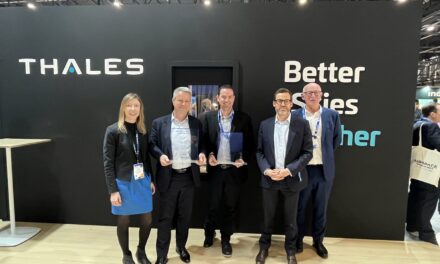A study has been launched to set up one of the first synthetic e-fuel production units in Europe at the LIPOR waste-to-energy plant near Porto. Thanks to its innovative design and technology, it should revolutionize the waste-to-energy industry while decarbonizing the aviation sector.
The interdisciplinary consortium formed by LIPOR (Intermunicipal Waste Management of Greater Porto), P2X Europe and Veolia is launching feasibility studies to integrate an industrial-scale sustainable alternative fuel production unit into the Maia Waste-to-Energy plant.
The project will enable the production of green synthetic e-fuel for the aviation industry from CO2 captured in the waste gas stream of the MWU, combined with green hydrogen. Initially, up to 100,000 tons of captured biogenic CO2 will be recycled into e-fuels and transformed into green synthetic end products such as e-kerosene, e-diesel and other chemicals.
This CO2 capture and recovery (CCU) project at LIPOR’s UVE will capture, extract and purify the biogenic portion of CO2, which makes up about 60% of the carbon dioxide emissions generated as a result of the incineration process.
The innovative CCU technology can be integrated directly into the existing energy recovery plant, allowing for near-zero or even negative CO2 electricity generation, thereby significantly improving the environmental and energy balance of municipal waste incineration.
This initiative is also a decisive step for LIPOR in its mission to transform municipal waste into new resources through the implementation of innovative and circular practices.
It represents an important step forward for the waste-to-energy industry and allows us to move away from the linear model by offering a novel alternative to accelerate the transition to a circular economy, in line with Portugal’s energy and climate policies and its 2050 carbon neutrality goals.









